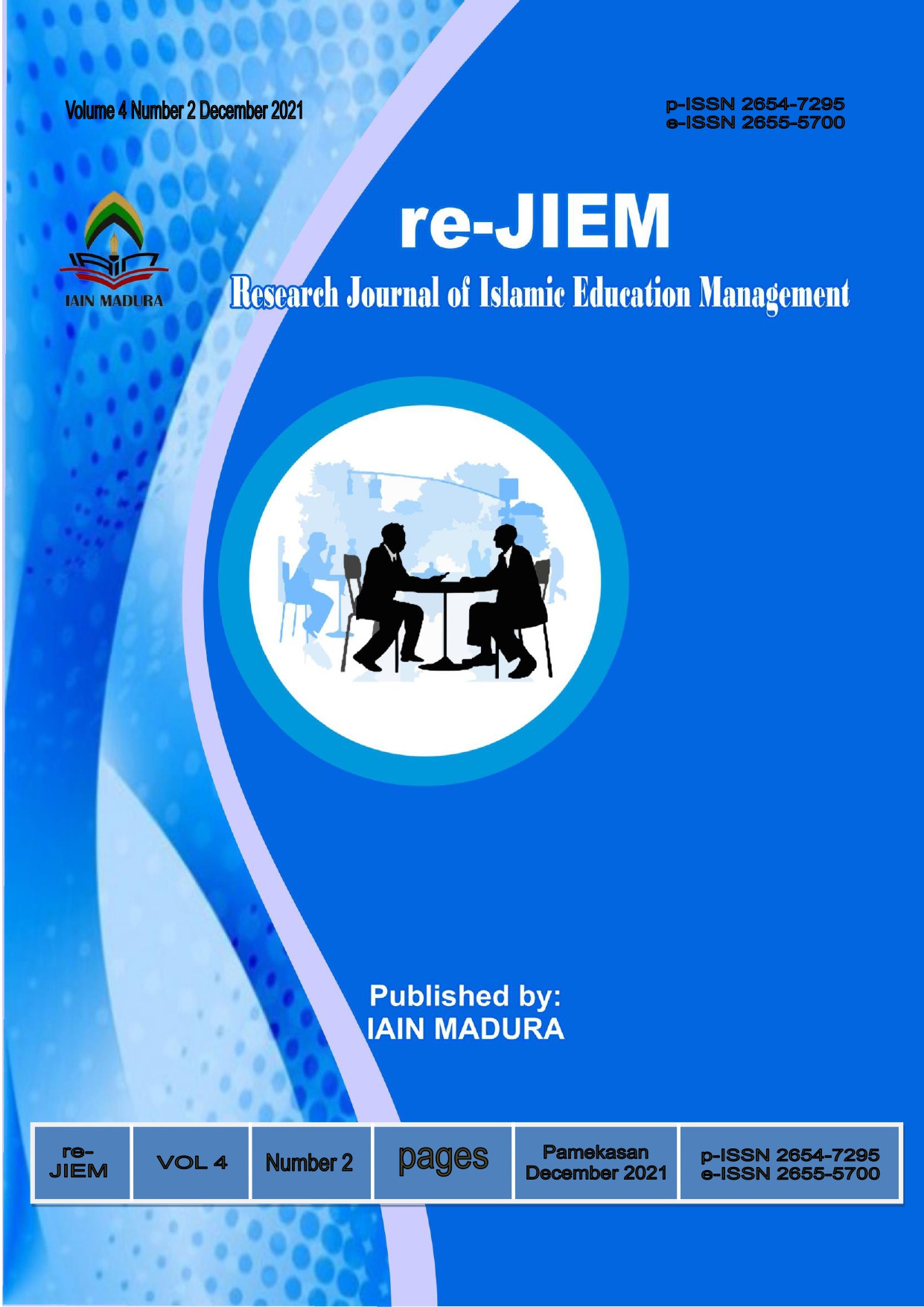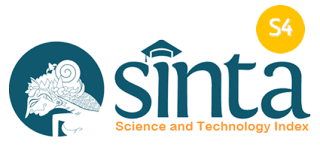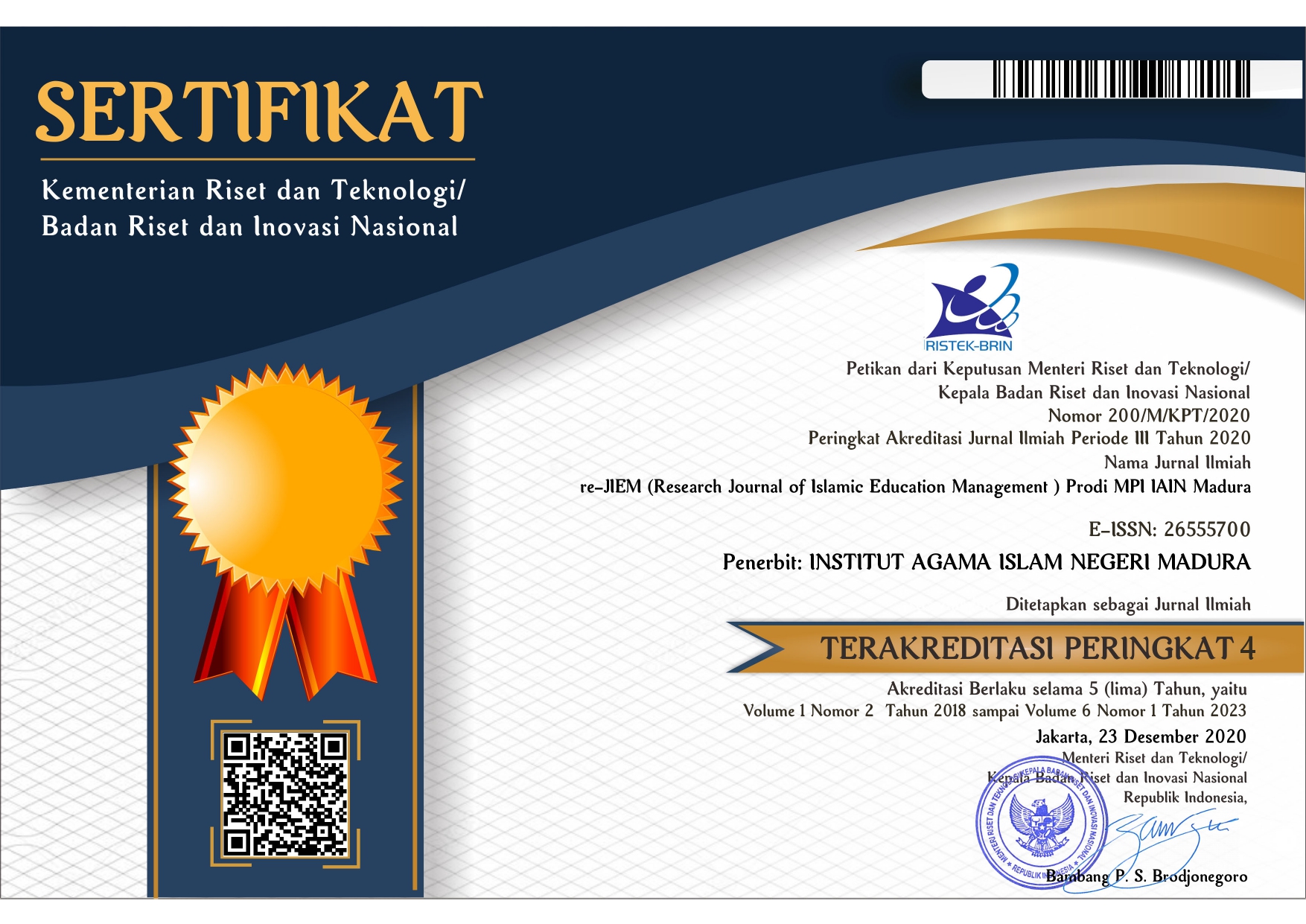PENARIKAN MINAT MASYARAKAT SEBAGAI WUJUD STRATEGI KEPALA SEKOLAH DALAM MEMBANGUN CITRA POSITIF LEMBAGA DI SMA WACHID HASYIM PAMEKASAN
 Abstract views: 580
,
Abstract views: 580
,
 PDF downloads: 443
PDF downloads: 443
Abstract
The first step that parents take before entering their child into an educational institution is to choose the school of interest. To be able to attract the interest of the community, especially parents and prospective students in educational institutions, the school needs to make efforts to develop schools in order to maintain the image of the school in the community. Principals and teachers play an important role in this effort, especially the principal as a leader who carries out his leadership, namely regulating, managing all the resources of the educational institution he leads. Based on this, research was conducted at SMA Wachid Hasyim regarding the principal's efforts to build a positive image of educational institutions to attract public interest, with two focuses, namely: 1) What is the principal's strategy in building a positive image of educational institutions to attract public interest at SMA Wachid Hasyim Pamekasan; 2) What are the supporting and inhibiting factors for principals in building a positive image of educational institutions to attract public interest in Wachid Hasyim Pamekasan High School.
Downloads
References
Aziz, Abdul. Manajemen Pengelolaan Sarana dan Prasarana di Sekolah dan Madrasah. Surabaya: Pustaka Radja, 2018.
Hamzah, Amir. Etos Kerja Guru Era Industri. Malang: Literasi Nusantara, 2019.
Sandyakala, Mutiara Cendekia. “PERAN PUBLIC RELATION DALAM MENINGKATKAN CITRA LEMBAGA PENDIDIKAN,” at-Tadbir 30, no. 2 (2020). https://ejournal.staisyamsululum.ac.id/index.php/attadbir/article/view/63.
Permendiknas Nomor 13 Tahun 2007 Tentang Standar Kepala Sekolah/Madrasah.
Salim dan Syahrum. Metodologi Penelitian Kualitatif. Bandung: Citapustaka Media, 2012.
Samsu. Metode Penelitian (Teori dan Aplikasi Penelitian Kualitatif, Kuantitatif, Mixed Methods, Serta Research & Development). Jambi: Pusaka, 2017.
Satori, Djam’an dan Aan Komariyah, Metodologi Penelitian Kualitatif. Bandung: Alfabeta, 2009.
Lestari, Sinta Petri dan Ayu Lestari. “STRATEGI PUBLIC RELATION RA ANNUR BABADAN DALAM MEMBANGUN CITRA POSITIF DI MATA ORANG TUA MURID,” Jurnal Egaliter 5, no. 8 (2021). http://jurnal.unpand.ac.id/index.php/egr/article/view/1675/0.
Soleh, Badrus dan Iswatul Hasanah. “MANAJEMEN PENDIDIKAN PESANTRENAL-ULUM WAL-ALTHOF DALAM MENGUATKAN SIKAPMODERASI BERAGAMA SANTRI,” re-JIEM: Research Journal of Islamic Education Management vol. 4, no. 1 (2021). http://ejournal.iainmadura.ac.id/index.php/re-jiem/article/view/4733.
Sowiyah. Kepemimpinan Kepala Sekolah. Yogyakarta: Media Akademi, 2016.
Sugiyono. Metode Penelitian Kuantitatif, Kualitatif Dan R&D. Bandung: Alfabeta, 2010.
Suhardiman, Budi. Studi Pengembangan Kepala Sekolah: Konsep dan Aplikasi. Jakarta: Rineka Cipta, 2012.
Ma’sum, Toha. “EKSISTENSI MANAJEMEN PEMASARAN DALAM MEMBANGUN CITRA LEMBAGA PENDIDIKAN,” Jurnal Intelektual 10, no. 2 (2020). https://ejournal.iai-tribakti.ac.id/index.php/intelektual/article/view/1243.
Wijaya, David. Pemasaran Jasa Pendidikan. Jakarta: Bumi Aksara, 2016.
Copyright (c) 2021 Ali Nurhadi, Novela Angga Pratiwi, Badrus Soleh

This work is licensed under a Creative Commons Attribution-ShareAlike 4.0 International License.
Authors who publish with this journal agree to the following terms:
Authors retain copyright and grant the journal right of first publication with the work simultaneously licensed under a Creative Commons Attribution-ShareAlike 4.0 International License that allows others to copy and redistribute the material in any medium or format with an acknowledgment of the work's authorship and initial publication in this journal and also allows to remix, transform, and build upon the material for any purpose, even commercially with contributions under the same license as the original.
Authors are able to enter into separate, additional contractual arrangements for the non-exclusive distribution of the journal's published version of the work (e.g., post it to an institutional repository or publish it in a book), with an acknowledgment of its initial publication in this journal.
Authors are permitted and encouraged to post their work online (e.g., in institutional repositories or on their website) prior to and during the submission process, as it can lead to productive exchanges, as well as earlier and greater citation of published work.



























